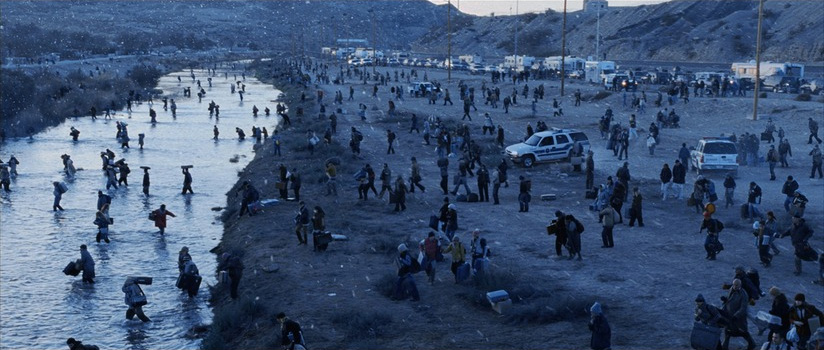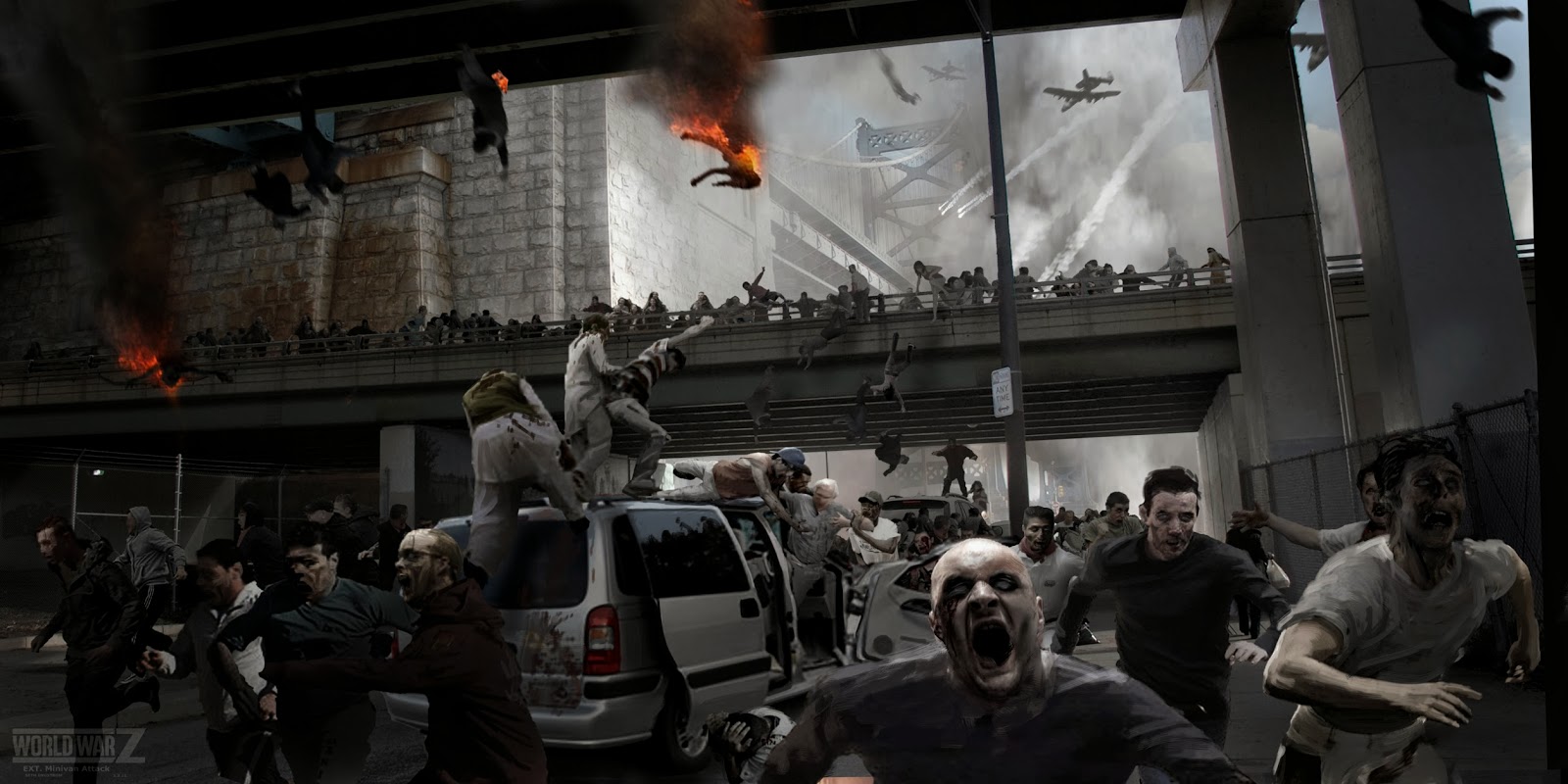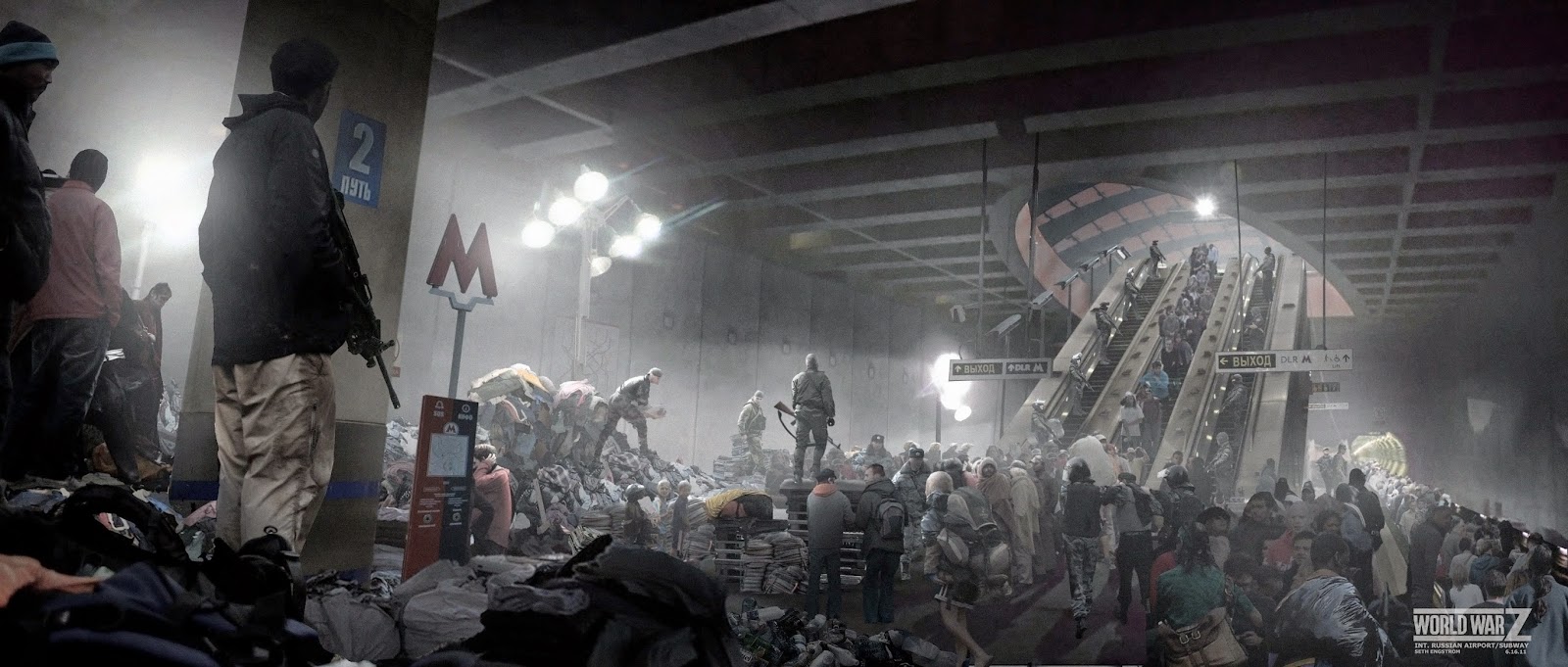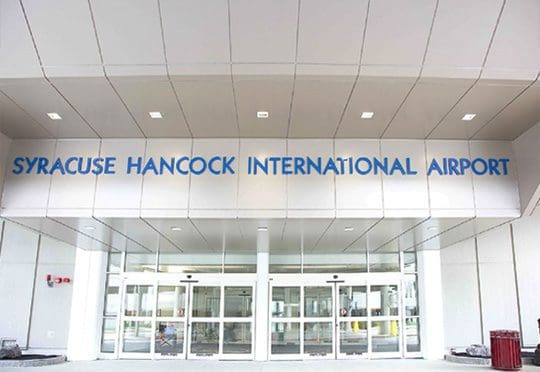You are using an out of date browser. It may not display this or other websites correctly.
You should upgrade or use an alternative browser.
You should upgrade or use an alternative browser.
Photos from World War Z
- Thread starter CJD
- Start date
-
- Tags
- world war z

Breckenridge "Breck" Scott, Inventor of Phalanx and probably the most hated man in the world.
Phalanx was the drug that was dubbed "the African Rabies vaccine". Created by Breckenridge "Breck" Scott, a corrupt pharmaceutical developer, he quickly made a fortune. Scott jumped on the idea of a vaccine almost as soon as reports of "African Rabies" outbreaks came out of South Africa. In a few months, his company had developed a creditable vaccine for marketing, naming it Phalanx after the powerful defense formation of the ancient Greeks.
It all turned out to be a hoax drawn up to make money. Although it was a real vaccine for actual rabies, it was nothing more than a placebo against the zombie virus Solanum. In fact, it had never been tested against Solanum at all. Nonetheless, the fact that it was harmless to use meant it was approved by the US Food and Drug Administration. Technically, Phalanx was never actually marketed as an "anti-zombie virus vaccine"; it was openly described as a vaccine against "rabies", and it did work, so it passed FDA testing. The problem was that people wanted an anti-zombie vaccine at the same time that they refused to believe that zombies existed.
his is most likely what set off The Great Panic, during which Breckenridge pulled an Enron-esque investment fraud, fleeing the U.S. with millions, if not billions, of dollars of his investor's money. Scott eluded authorities easily thanks in part to the turmoil that now engulfed the world.
Scott eventually bought refuge at the Russian-owned Vostok research station in Antarctica, and he hasn't left it since the Great Panic. To this day Scott denies any and all responsibility for any of his actions, and is confident that as long as he can keep paying, the Russians will continue to offer him political protection. Numerous vengeful authorities, particularly the IRS, have been negotiating with the new Russian government since the end of WWZ to end Scott's lease at the station, and indications from American officials suggest that the Russians may be willing to oblige in the very near future.
(P.S it's a photo of Martin Shkreli).

Flight 575 was the name of a flight from Asia to European or American areas before World War Z, before the first major Cape Town outbreak that led to the virus, Solanum, being called 'African Rabies' or before most people knew what was going on. It is also the name of one of the largest air disasters, like 9/11, and most likely the largest caused by Solanum. It is unclear what exactly happened. However, it is easily inferred that the air disaster first started with 'shetou', the Chinese word for smuggler, or, literally translated, "snake head", as they smuggled 'renshe', the Chinese word for refugees, or, literally translated, "human snake". These 'shetou' had been smuggling 'renshe' from China to European or American areas. Despite the 'shetou' having a golden rule that the only way a 'renshe' could make it past foreign immigration officials was to make it past them first, quite a number of infected refugees still travelled by air. However, Flight 575 had an exceptionally high number of infected travelling from China to American or European countries. Flight 575 still became the worse air disaster involving Solanum. It led to tighter restrictions in certain countries to ensure that no infected could board a plane and cause another Flight 575.

Breckenridge "Breck" Scott, Inventor of Phalanx and probably the most hated man in the world.
Phalanx was the drug that was dubbed "the African Rabies vaccine". Created by Breckenridge "Breck" Scott, a corrupt pharmaceutical developer, he quickly made a fortune. Scott jumped on the idea of a vaccine almost as soon as reports of "African Rabies" outbreaks came out of South Africa. In a few months, his company had developed a creditable vaccine for marketing, naming it Phalanx after the powerful defense formation of the ancient Greeks.
It all turned out to be a hoax drawn up to make money. Although it was a real vaccine for actual rabies, it was nothing more than a placebo against the zombie virus Solanum. In fact, it had never been tested against Solanum at all. Nonetheless, the fact that it was harmless to use meant it was approved by the US Food and Drug Administration. Technically, Phalanx was never actually marketed as an "anti-zombie virus vaccine"; it was openly described as a vaccine against "rabies", and it did work, so it passed FDA testing. The problem was that people wanted an anti-zombie vaccine at the same time that they refused to believe that zombies existed.
his is most likely what set off The Great Panic, during which Breckenridge pulled an Enron-esque investment fraud, fleeing the U.S. with millions, if not billions, of dollars of his investor's money. Scott eluded authorities easily thanks in part to the turmoil that now engulfed the world.
Scott eventually bought refuge at the Russian-owned Vostok research station in Antarctica, and he hasn't left it since the Great Panic. To this day Scott denies any and all responsibility for any of his actions, and is confident that as long as he can keep paying, the Russians will continue to offer him political protection. Numerous vengeful authorities, particularly the IRS, have been negotiating with the new Russian government since the end of WWZ to end Scott's lease at the station, and indications from American officials suggest that the Russians may be willing to oblige in the very near future.
(P.S it's a photo of Martin Shkreli).
Given the assumption that the Z-war could happen, and the military could and did fail at containment e.g. Yonkers.
The Redeker Plan was not just "set up safe zones to keep as many people alive and defended". That was the first part, meant to preserve the government and set up a wartime manufacturing base for an eventual counteroffensive. The second part was the kicker. Setting up small, scattered "safe zones" ostensibly for the people in the are who couldn't get to the Rocky Line or Tazmania etc. The real purpose of these was to provide a big enough piece of bait, to draw in that area's zombies and keep them pinned to one place. That way, there's fewer zombies chasing after the retreating government, assaulting the real safe zone before they can get set up, and also a list of areas where battles will be fought later that can be planned for. Remember, one of the key mistakes at Yonkers was that there were a few zombies left behind the line. They attacked and ate a soldier, which was broadcast to every other soldier, which caused mass panic. Keep the zombies knocking on Pittsburgh's door, and that's a million fewer zombies trying to get to LA. That means fewer soldiers need to be fielded and fed by the products of the safe zone, which means the zone can become economically viable faster and gear up for war faster.
Without Redeker, and all the Redeker-based plans used in Germany, Korea, the U.K., U.S. and elsewhere, there is no mechanism to draw the zombies away from an area where the government is trying to regroup. There are constant attacks across the board. Without a large, centralized force to keep safe zones supplied and fighting, many more of these independent zones fall. each zone that falls releases the zeds surrounding it to go to the next large enough grouping of people, now bolstered by the zombies that were the old safe zone's population. Given this, there is a huge difference between the Redeker plan and the survivor enclaves that would spring up organically. The Redeker plan basically herds people into hostage/siege situations and endangers/kills millions, but in the long run it allows a central authority to survive and buys it time to push back the zed, saving millions more than otherwise.
Without Redeker, as shown by Russia and China, the nation devolves into a million small simultaneous battles with no overall strategy, a war of attrition that plays into the zombies' one real strength.
Barry Bull
Donor
Having read https://zombie.fandom.com/wiki/Artillery , I wonder whether the author of the original WWZ book underestimate the effect of mass use of high caliber artillery against zombies (105mm and 155mm), esp. when the artillery is targeting a set "Kill Box", as strong shockwaves are strong enough to turn the brain in mush against the skull.
I would think mass artillery barrages would be pretty effective against large swarms of zombies (but not so much against small groups, accuracy would be harder), even the zombies that didn't suffer brain damage would suffer loss of legs and arms making them less dangerous.Having read https://zombie.fandom.com/wiki/Artillery , I wonder whether the author of the original WWZ book underestimate the effect of mass use of high caliber artillery against zombies (105mm and 155mm), esp. when the artillery is targeting a set "Kill Box", as strong shockwaves are strong enough to turn the brain in mush against the skull.

A photo taken in an unspecified location in Midwest showed one of documented greatest migrations of humans. Throughout the world, the Z pandemic has caused millions to leave their place for supposed safer areas. In North America, millions of people from as far as southern Mexico tried to escape the chaos to the Canadian wilderness - only to be killed in great numbers by famine and harsh nature. In many post-war reports, 11 millions are cited as the estimated number of victims dying during the freezing winter in North America alone.
(Taken from The Day After Tomorrow)

A vehicle is used to evacuate civilians and military personnels across a flooded area near Nairobi, Kenya during the Z pandemic.
Barry Bull
Donor
I would think mass artillery barrages would be pretty effective against large swarms of zombies (but not so much against small groups, accuracy would be harder), even the zombies that didn't suffer brain damage would suffer loss of legs and arms making them less dangerous.
And the movie version of battle of yonkers did not show much artillery being used, if my memory is correct.
And the movie version of battle of yonkers did not show much artillery being used, if my memory is correct.
Yonkers never appeared in the film. Very unforgivable indeed.
And the movie version of battle of yonkers did not show much artillery being used, if my memory is correct.
There were some infantry engagements with Philly SWAT/Pennsylvania National Guard, the US Army forces stuck in that base in Korea, and the IDF in Jerusalem but that's about it. Apparently the original climax would feature a massive battle in Moscow's Red Square but that never came to fruition amongst the movie's very troubled production.
Last edited:
There were some infantry engagements with Philly SWAT/Pennsylvania National Guard, the US Army forces stuck in that base in Korea, and the IDF in Jerusalem but that's about it. Apparently the original climax would feature a massive battle Moscow's Red Square but that never came to fruition amongst the movie's very troubled production.
The whole movie production was rushed, a very of waste of a good idea. IMO, it should just become a mockumentary series.
A miniseries with opening interviews in the vein of Band of Brothers, I think would have worked.The whole movie production was rushed, a very of waste of a good idea. IMO, it should just become a mockumentary series.
A miniseries with opening interviews in the vein of Band of Brothers, I think would have worked.
An HBO miniseries would be awesome.
I haven't seen the movie.And the movie version of battle of yonkers did not show much artillery being used, if my memory is correct.
I haven't seen the movie.
The general consensus is that it's a fairly middle of the road, forgettable action flick. Personally I'd say that it's a decent enough monster movie to kill a evening with if you feel like it.
Anyway Concept art!

This one gives you some idea of how Moscow would have looked. Including book actuate use of old T-34s to run over Zack.

There was apparently a Yonkers like scene involving tanks defending the Ben Franklin bridge in Philadelphia from a horde but it didn't make into the movie.


Always found a blogpost with some decent stuff here: http://sethengstrom.blogspot.com/2013/03/blog-post.html?m=1

UN Inspector Max Brooks holds a copy of his book and ultimate best-seller World War Z during a public speaking event in the University of Honolulu. World War Z is one of the best records of plague years leading from the beginning stages to the total war phase.

Defense contractor Roger Ma demonstrates anti-zombie combat. Ma is the author of the Zombie Combat Manual, considered to be a knock-off of Max Brook's The Zombie Survival Guide. Nonetheless, Ma and Brooks are close friends and have worked together in training military, police, and civilians on anti-zombie operations post-war.
Share:


